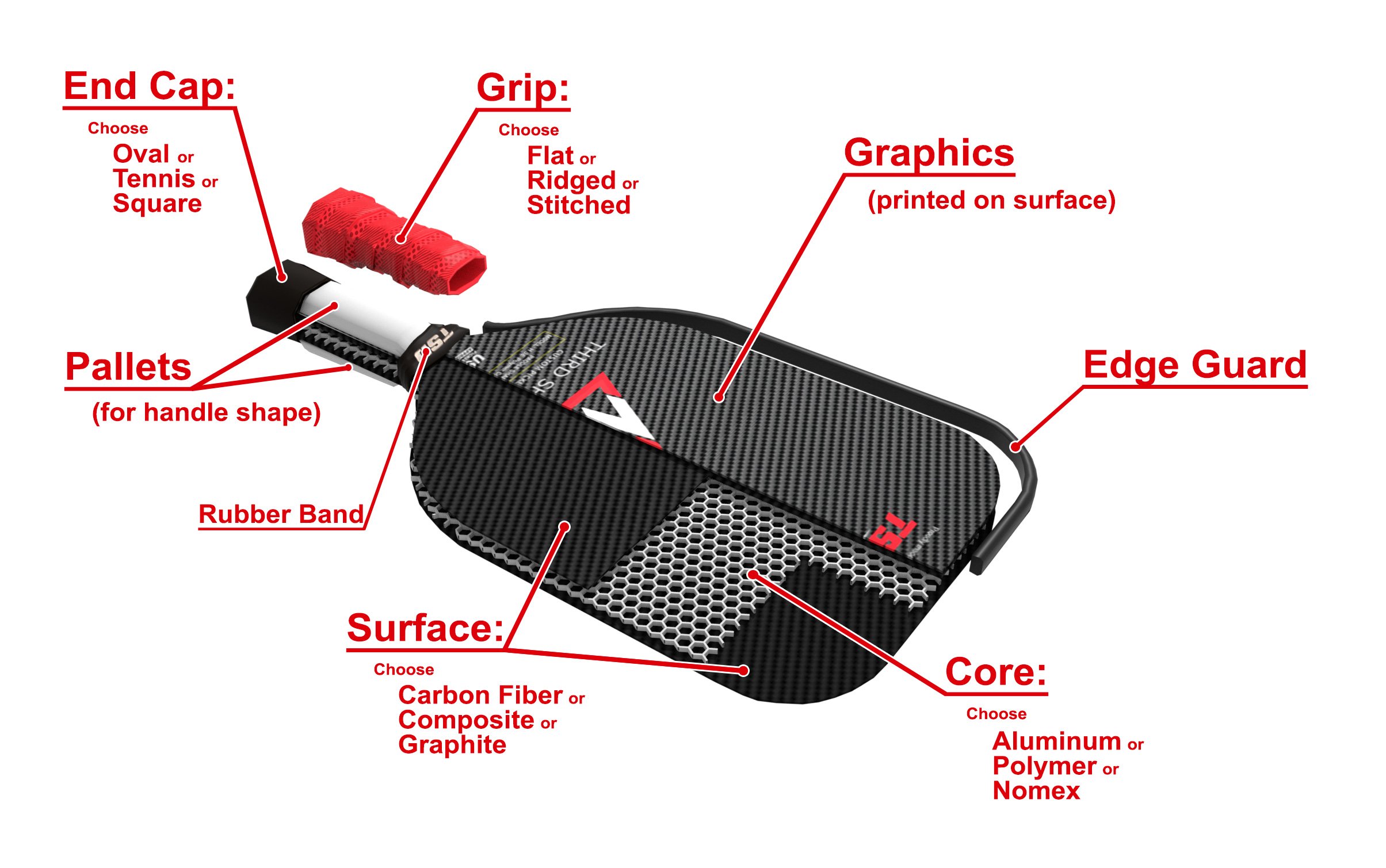How Paddle Core Materials Affect Your Game (And Which One You Should Choose)
When it comes to choosing a pickleball paddle, most players focus on weight, grip, or face material. But the unsung hero—or villain—of your performance often lies at the heart of the paddle: the core.
Core material plays a massive role in how your paddle feels, how it performs, and ultimately, how you play. Whether you're looking for more control, greater power, or a softer touch at the net, understanding core construction can help you make a smarter, more personalized equipment choice.
Let’s break down the key paddle core types and how they translate into on-court performance.
Source: Third Shot Drop
1. Polymer Core (Also Known As Poly Core Or Honeycomb Polymer)
What It Is:
The most popular paddle core on the market today, polymer cores are made from a blend of plastic resin formed into a honeycomb structure.
How It Plays:
Poly cores are known for their quiet, soft feel and excellent touch control. They're perfect for players who love finesse shots, dinking at the kitchen, and slowing down the pace of a rally. Because the material absorbs more vibration, they’re also easy on the arm—ideal if you’re dealing with tennis elbow or simply want a more forgiving paddle.
Who It’s For:
Intermediate to advanced players who prioritize control
Doubles players looking to master the soft game
Players who prefer a quieter paddle (great for noise-restricted communities)
2. Nomex Core
What It Is:
One of the original pickleball paddle cores, Nomex is a type of paper-based honeycomb material that's dipped in resin and baked to create an ultra-durable structure.
How It Plays:
Nomex cores are loud, firm, and fast. These paddles generate significant pop and speed off the face, making them ideal for aggressive players who like to drive the ball and attack. However, they don’t offer the same level of touch or vibration dampening as polymer cores, and can be harder on the joints over time.
Who It’s For:
Singles players who rely on quick reaction and power
Players with fast hands who like to dominate the net
Anyone who doesn’t mind a bit of noise in exchange for explosiveness
3. Aluminum Core
What It Is:
A honeycomb structure made of aluminum sheets, designed to combine strength with a relatively soft touch.
How It Plays:
Aluminum-core paddles offer a unique balance of control and responsiveness. They tend to be lighter than other core types, which makes them great for maneuverability—but they sacrifice some power in the process. The feel is solid and sharp, but not as plush as polymer or as explosive as Nomex.
Who It’s For:
Players who prioritize paddle speed and reflexes
Those transitioning from table tennis or badminton
Control-focused players who still want a crisp contact
So…Which Paddle Core Should You Choose?
Here’s a quick guide to help you decide based on your playstyle:
Still unsure? Don’t be afraid to demo a few paddles before committing. Sometimes what sounds good on paper doesn’t feel quite right in the hand—and vice versa.
Final Thoughts
Choosing the right paddle core isn’t about chasing trends. It’s about matching your gear to your game. Each material brings a different experience to the court, and finding the one that enhances your strengths (while supporting your weaknesses) is key to long-term improvement.
As pickleball continues to evolve, so does paddle technology. But at the end of the day, the best paddle is the one that feels like an extension of your hand. So pay attention to the core—it just might be the secret weapon your game’s been missing.


